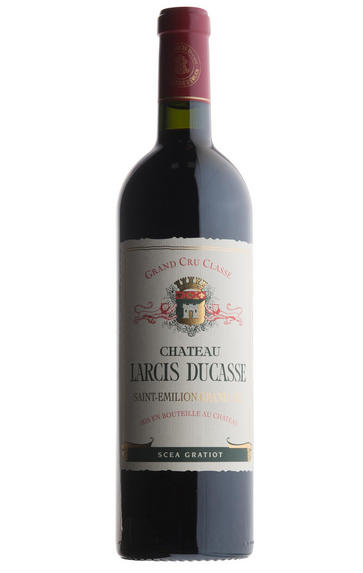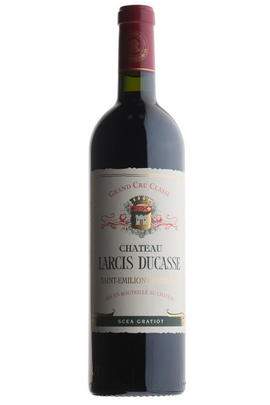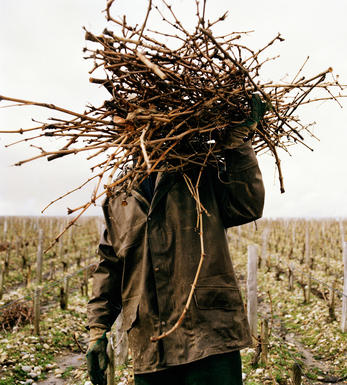
2009 Château Larcis Ducasse, St Emilion, Bordeaux

Critics reviews
Lisa Perrotti-Brown - 14/03/2019
(Jancis Robinson MW - jancisrobinson.com - January 2013)
Some development at the rim. Rich and super-ripe black fruits. Sweet and rather fruit-juice like. Polished and made with great elan. Super smooth. I think people would like this. The tannins have been well managed. It’s just a little too sweet for my personal taste.
(Jancis Robinson MW, jancisrobinson.com - Apr 2010)
(James Suckling - Wine Spectator - March 2010)
Showing better from bottle than it did from barrel, this wine comes very close to equaling the prodigious 2005 that was produced by consultants Nicolas Thienpont and Stephane Derenoncourt. Cropped at 25 hectoliters per hectare from the limestone hillsides of this terroir, the final blend was 81% Merlot and 19% Cabernet Franc that tipped the scales at 14.6% natural alcohol. It is a brilliant sample of wine, as this has long been one of the great terroirs of St.-Emilion, but under-exploited until nearly a decade ago.
(Robert Parker - Wine Advocate - Feb 2012)
About this WINE

Chateau Larcis Ducasse
Traditionally Ch. Larcis Ducasse, a St Emilion Grand Cru Classé, was regarded as a property with exceptional terrior but a constant underperformer. This has changed, mainly thanks to the talents of a new winemaking team headed up by Nicolas Thienpont (of Ch. Pavie Macquin repute) and Stephane Derenoncourt (the mercurial 'flying wine consultant') who have managed to unlock the potential of this sleeping giant.
The estate is located on one of Bordeaux's finest strips of terroir - the Cote Pavie in St Emilion. Here, this 25-acre property abuts the 1er Grand Cru Classé Ch. Pavie estate. The vines are planted on an eclectic range of soils - alluvial sand deposits, clay, chalk and limestone. The vines, as one would expect for that part of the world, are predominately Merlot (some 75%) Cabernet Franc and Cabernet Sauvignon.
The new winemaking team arrived in 2002 and since then, the wines have gone from strength to strength. Look out especially for the 2005 Ch. Larcis Ducasse (98/100 Parker), 2006 Ch. Larcis Ducasse (91-94 Parker) and 2007 Ch. Larcis Ducasse (92-94 Parker), as these are the manifestation of all the hard work undertaken at the château over recent years.

St Émilion
St Émilion is one of Bordeaux's largest producing appellations, producing more wine than Listrac, Moulis, St Estèphe, Pauillac, St Julien and Margaux put together. St Emilion has been producing wine for longer than the Médoc but its lack of accessibility to Bordeaux's port and market-restricted exports to mainland Europe meant the region initially did not enjoy the commercial success that funded the great châteaux of the Left Bank.
St Émilion itself is the prettiest of Bordeaux's wine towns, perched on top of the steep limestone slopes upon which many of the region's finest vineyards are situated. However, more than half of the appellation's vineyards lie on the plain between the town and the Dordogne River on sandy, alluvial soils with a sprinkling of gravel.
Further diversity is added by a small, complex gravel bed to the north-east of the region on the border with Pomerol. Atypically for St Émilion, this allows Cabernet Franc and, to a lesser extent, Cabernet Sauvignon to prosper and defines the personality of the great wines such as Ch. Cheval Blanc.
In the early 1990s there was an explosion of experimentation and evolution, leading to the rise of the garagistes, producers of deeply-concentrated wines made in very small quantities and offered at high prices. The appellation is also surrounded by four satellite appellations, Montagne, Lussac, Puisseguin and St. Georges, which enjoy a family similarity but not the complexity of the best wines.
St Émilion was first officially classified in 1954, and is the most meritocratic classification system in Bordeaux, as it is regularly amended. The most recent revision of the classification was in 2012

Merlot
The most widely planted grape in Bordeaux and a grape that has been on a relentless expansion drive throughout the world in the last decade. Merlot is adaptable to most soils and is relatively simple to cultivate. It is a vigorous naturally high yielding grape that requires savage pruning - over-cropped Merlot-based wines are dilute and bland. It is also vital to pick at optimum ripeness as Merlot can quickly lose its varietal characteristics if harvested overripe.
In St.Emilion and Pomerol it withstands the moist clay rich soils far better than Cabernet grapes, and at it best produces opulently rich, plummy clarets with succulent fruitcake-like nuances. Le Pin, Pétrus and Clinet are examples of hedonistically rich Merlot wines at their very best. It also plays a key supporting role in filling out the middle palate of the Cabernet-dominated wines of the Médoc and Graves.
Merlot is now grown in virtually all wine growing countries and is particularly successful in California, Chile and Northern Italy.


Buying options
Add to wishlist
Description
An intense, lifted perfume, from the 19% Cabernet Franc, burst from the glass upon tasting this wine whilst the supple elegance of perfectly ripe (but not overripe) 81% Merlot added a fine, silky balance. The stylish, ripe tannins then melted away leaving a long, long finish with a Ribena kick at the end. Simply delicious.
wine at a glance
Delivery and quality guarantee